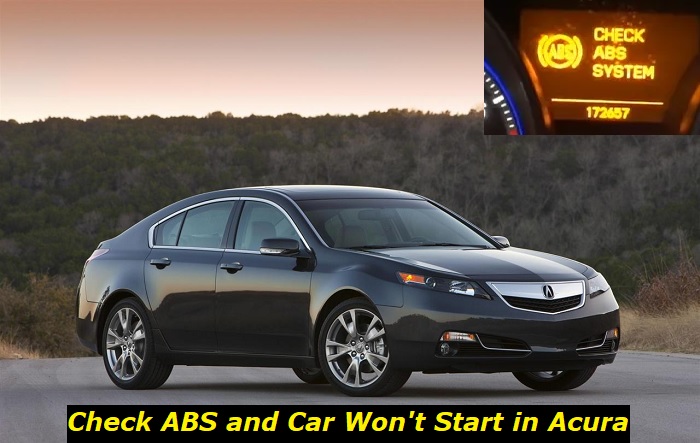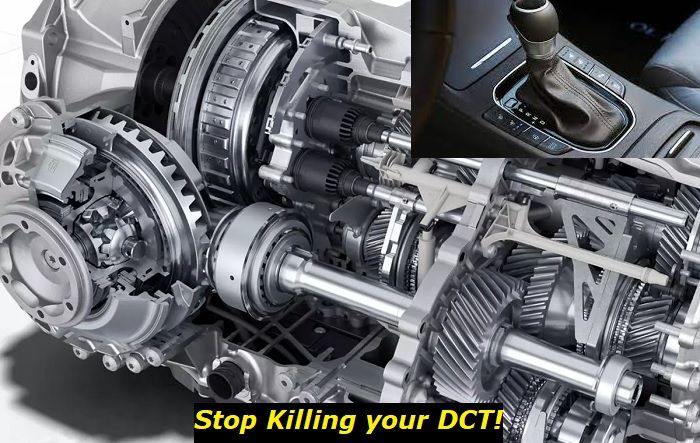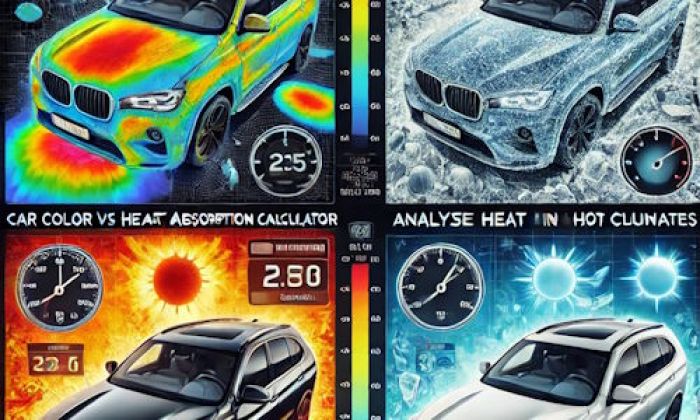Your Acura is pretty expensive to repair, so you may really get some bad time whenever you see a warning light flashing or illuminating on your dash. What's more, your car doesn't want to start and this obviously adds to spoiling your mood. But you should understand what those warning lights mean and what you can do to fix the problem.
Check ABS system message highlights
- Common reasons:ABS sensor failure, ABS control module problem, weak battery
- How to fix:check the battery, read the codes for ABS sensor or module problems
- Possible consequences:ABS may not be working properly
- Priority level:High
- Can you drive?Carefully
- DIY repair:Possible but complicated
- Repair price range:$100-$650

Check the ABS System warning explanation
If you drive your Acura and suddenly see the warning message telling you that the ABS system is in problem, you aren't likely to keep smiling as you did before. You know that ABS is the anti-lock braking system that improves the safety of your car. And if you see this while driving, it's most likely that one of the ABS sensors has just failed.
But what if this message appears right when you are trying to start your car? In this case, I can presume that the ABS system didn't pass through the initial test that is silently issued every time you start your Acura.
This test usually does the following:
- running through all the control modules and units to check if they are active and ready to work;
- checking all the sensors that are connected to the ECU and other modules for their response;
- activating the sensors and units that are important for starting your car;
- checking the voltage in the system of the vehicle;
- checking if all the units, solenoids, and actuators get the proper voltage to operate;
- informing the driver of any found issues by throwing messages and warnings on the dash.
Although the process may differ from one car model to another, it looks more or less this way. It means that the ABS system and the battery voltage are tested even before you start the car. In modern vehicles, this test is carried out in milliseconds, not even seconds. In older vehicles, the test is carried out while the fuel pump builds up the needed pressure for starting the car.
So, if this test actually fails, you will see a certain warning light or error message on the dash. Don't worry - almost all warning lights come on the dashboard when you are trying to start the car. But if some of them don't go off after several seconds, your car may have a problem. And if it doesn't start and says "Check ABS System", your Acura obviously needs help.
ABS warning and the car not starting - what's this?
Now, from the previous paragraph, you may have made a conclusion that your ABS module or one of the sensors may fail. That's why you see that "Check ABS System" message in your Acura. But things may be way more tangled. This can be true if the car easily starts and the error message still hangs there on the dash.
But if your car doesn't start, you shouldn't think about the ABS system. There is literally no way the faulty ABS module or sensor may prevent your Acura from starting.
So, here's what happens:
- your Acura runs the usual test before starting your car and registers the abnormally low voltage;
- at one point, the test fails to power the ABS module or any other system connected to traction control or stability control;
- immediately, you will get a warning message saying that the VSA or ABS should be checked;
- at this point, the vehicle will stop doing the test and it will allow you to start the engine if the power in your battery is enough for this;
- but the battery is low and the engine can't be started, the battery management system just cuts off the power;
- eventually, you are left with the ABS warning and the engine that doesn't even crank - lots of wrong thoughts are possible here.
Anyway, it's important to understand that ABS or VSA systems won't prevent your engine from starting. Even if they fail fatally, you will only get the message on the dash, nothing more. When the engine doesn't start, you should check two things - the start motor and the battery. Given the starter motors in Acura and Honda cars can live forever and very seldomly fail, you should pay attention to the battery.
This is how you could have deducted that the battery is your initial problem. Even if you eventually manage to start the car, you should solve the problem with the battery. Otherwise, it will leave you stranded in the worst possible situation.
What can you do to start the car in this situation?
There are basically two things you can do. Well, the third option is to push start the car if it's manual, but there are no manual Acuras on the market, so this option is certainly not your choice. Let's concentrate on the two options that are suitable for Acuras:
1) Jump-starting the vehicle
You can use jumper cables and jump-start the car. For this, do the following:
- Connect the positive terminal of the dead Acura to the positive terminal of another car with the special cable.
- Then, connect the second cable to the negative terminal in the donor car.
- After that, connect the other clamp of that cable to any unpainted part in your Acura - the engine will be OK.
- Start the donor car and let it idle for 5-7 minutes.
- Try starting the Acura. It should start now and after that, you may disconnect (the negative cable first, then the positive one).
- Don't turn the engine off in the next half hour or so - let your battery take some charge and get back to life.
Of course, after jump-starting your car, you should drive it for a while. If the battery is over 4-5 years old, it's time to replace it. Acura cars usually use AGM batteries that aren't that cheap. But they are stable in terms of voltage. So, if this battery is low in voltage, it must be completely dead. Sometimes, they may get back to life for some days to give you time to buy the new one.
2) Buy the new battery
Another option for you is to buy a new battery and replace the old one. Make sure you disconnect the negative terminal first and connect it in the last step only. Otherwise, you may fry something in your car and it will cost you much more to repair it.
The new battery should have the needed features like voltage, starting amps, size, etc. Make sure you choose the battery in accordance with the guidelines from the driver's manual. Otherwise, the new battery may not only die soon but it may also cause some issues for your vehicle.
When will you need professional help?
Well, you will obviously need professional help if the steps above don't let you start your Acura. This means that something is wrong with the car and its functions. You may need proper diagnostics in the dealership to find out what exactly is wrong with the car.
Also, you may need to get your car towed to the dealership or repair shop because it may not just start. But if the dealer offers you a very expensive repair, you may want to check it with some other shop to make sure that the dealer doesn't just want to get your money.
Why is the battery failing in your Acura?
There are several conditions that kill the battery in your Acura. Here they are:
- old battery - the average life of the AGM battery is 4 years, sometimes they can last 5 years;
- physical damage - if the battery was hit, fell, or had some other damages, it may just stop working;
- issues with connection - you should check the contamination on terminals, they should be clean;
- draining - you may have been listening to music with your engine off or some extra equipment is draining the battery;
- city driving - if you only drive in the city with short cycles, the battery will live twice shorter life than average;
- poor quality of the battery - sometimes, the batteries may fail early because they are just cheap and bad.
The longevity of the battery depends on many factors but the above listed ones are the most crucial. If you only drive your Acura in the city, recharge the battery with a special AGM charger at least once every 6 months. This will seriously prolong its life and save you from observing different error messages on the dash.
Also, make sure you buy high-quality batteries for your vehicle. They should have the proper capacity and other features.
About the authors
The CarAraC research team is composed of seasoned auto mechanics and automotive industry professionals, including individuals with advanced degrees and certifications in their field. Our team members boast prestigious credentials, reflecting their extensive knowledge and skills. These qualifications include: IMI: Institute of the Motor Industry, ASE-Certified Master Automobile Technicians; Coventry University, Graduate of MA in Automotive Journalism; Politecnico di Torino, Italy, MS Automotive Engineering; Ss. Cyril and Methodius University in Skopje, Mechanical University in Skopje; TOC Automotive College; DHA Suffa University, Department of Mechanical Engineering






Add comment